#holy man
Photo

Source details and larger version.
Check out this collection of vintage silhouettes.
17 notes
·
View notes
Text
[+holy man] (Steddie)
First Part | Last Part
(Note: This is technically bonus and last part, but the fic isn't actually finished??? So if I ever manage to finish it, there will be more to this.)
The way Eddie kisses him is worshipful, and sorrowful, and sincere. Steve lets him. Maybe they should’ve had more words, and maybe they shouldn’t do this in the doorway, in direct line of sight to Steve’s neighbors (who aren’t many, but make up for it by being nosy). They stumble back into Steve’s living room, door hanging wide open, and then Eddie’s reverent lips move from his mouth to his face—cheeks, nose, chin—and then down.
“Eddie—”
“I love you,” Eddie says in response, “I’m sorry.”
“I’m sorry,” Steve says, “I shouldn’t have said anything to Rob.”
Eddie pulls away, and then pushes close, bumping their foreheads and noses together.
“You’re forgiven,” Eddie whispers.
“I’m serious,” Steve whispers back, “I messed up, too.”
“And that’s okay,” Eddie reassures, “We just need to work on talking about things.”
“Agreed.”
“Can I go back to kissing you now?”
“Please.”
#fanfiction#lgbtq#writer#gay#steddie#steve harrington#stranger things#eddie munson#reader#fanfic#ficlet#songfic#jake wesley rogers#holy man
23 notes
·
View notes
Text


Holy Man ▶ In This Moment
17 notes
·
View notes
Text

2:46am shadow work
#dark fantasy#make that shit dark#dark aesthetic#dark art#vampire#?#artists on tumblr#illustration#sketch#original character#character art#digital art#art#digital sketch#digital painting#art study#shadow study#shadow work#Holy#Holy man#priest#catholicsm#evil priest
9 notes
·
View notes
Photo




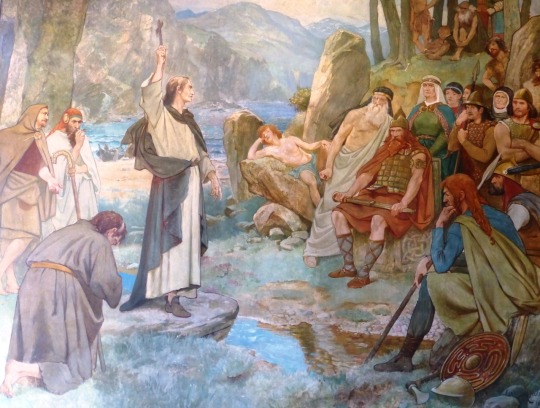

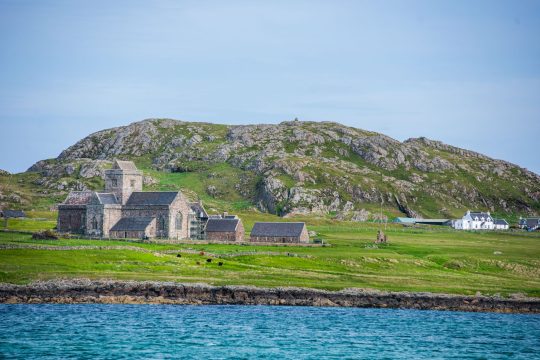
St. Columba is said to have been born in Donegal, Ireland on this day in 521AD.
Born into the royal Ui Neill (O’Neill) clan, Columba demonstrated scholarly and clerical ability early in life. Entering the monastic life, he was first received his training from Finnian of Moville and then from Finnian of Clonard. Even before his ordination to the presbyterate, he founded the monasteries of Derry (546) and Durrow, and probably Kells.
Twelve years after his ordination, he and a dozen companions left Ireland for Iona, a small island off the coast of what is now the southwest of Scotland. According to legend, Columba’s tiny coracle had washed ashore on the island, and the Irish king of Dal Riada, a Gaelic kingdom in the western isles and Highlands, made a gift of the island to him. Columba remained in this northwestern part of the island of the British Isles for the rest of his life, returning to Ireland only for occasional, though important, visits.
On Iona Columba founded the celebrated monastery which became the center for the conversion of the Picts, who were still largely pagan. He was kindly received on his missionary journeys among the Picts and the Irish of the Dal Riada and was allowed to preach, to convert, and to baptize. He converted Bruide, king of the Picts, and in 574 he consecrated Aidan, king of Dal Riada.
Columba founded two churches in Inverness and made long journeys throughout the Highlands, as far as Aberdeen. From Iona, his disciples also went out to found other monasteries, which in turn became centers of missionary activity.
The principal source for Columba’s history is the Life written by Adamnan, one of the most influential biographies of the early Middle Ages. Though disappointing as an historical document, this Life is a portrait of a charismatic personality and skillfully presents miracles, prophecies, and visions from the Iona tradition. From its pages Columba emerges as a tall, striking figure of powerful build and impressive demeanor, who combined the skills of scholar, poet, and overseer with a fearless commitment to God’s call.
For thirty years, Columba evangelized, studied, wrote, and governed his monastery at Iona. He supervised his monks in their work in the fields and workrooms, in their daily prayers and in their study and teaching. He imparted spiritual counsel to those who sought it, and he gave his counsel in solving the problems of neighboring rulers. Because he retained a sort of oversight of his monasteries in Ireland, he returned to there to attend synods of the Church, and thus established Iona as a link between Irish and Pictish Christians.
His skill as a scribe can be seen in the Cathach of Columba, a late sixth-century psalter which is the oldest surviving example of Irish majuscule writing. It was later enshrined in wood, and then in silver and bronze, sculptured with figures of the saints. The Cathach was venerated in churches, used at visitations, and carried into battle as a reminder of Columba’s authority and power. It’s a remarkable relic, the third pic shows the cover it was held in.
Four years before his death Columba’s strength began to fail. He spent much time in transcribing books, and he died peacefully while working on a copy of the Psalter. Adamnan relates that he had put down his pen, rested for a few hours, and at Matins was found dead before the altar, a smile upon his face. He is recorded as having said, “This day is called in the sacred Scriptures a day of rest, and truly to me it will be such, for it is the last of my life and I shall enter into rest after the fatigues of my labours.”
Columba’s memory lived on in his monasteries and more widely in Ireland, Scotland, and Northumbria. His traditions were upheld by his followers for about a century, not least in the Synod of Whitby and in the Irish monasteries on the continent of Europe. His feast is attested in the Calender of Willibrord, a book written in that saint’s own hand in the late seventh or early eighth century.
39 notes
·
View notes
Photo
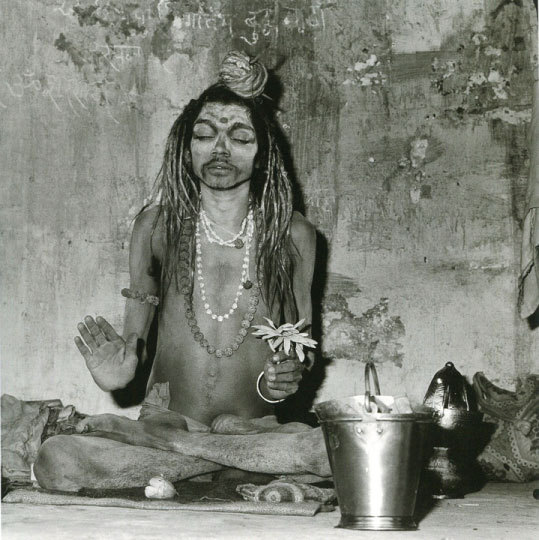
A Holy Man, Katmandu (1985). All photography by Rosalind Solomon
32 notes
·
View notes
Text
.
#my practice supervisor gave me good grades for my work#even though I worked like a lazy brute#😭😭😭😭😭#Holy man
7 notes
·
View notes
Text
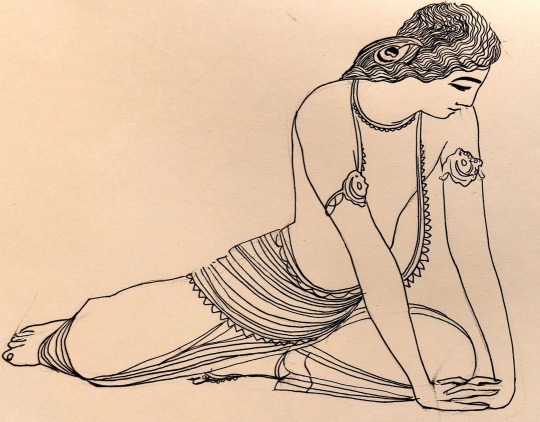
One drowns not by falling into river but by staying submerged in it.
...And while I am drowning all you are doing, western science is describing the water.
Internal weather always improves at the holy place, where we hope for miracle and in turn expiriance exactly what we need in order to grow.
At times that would mean going thru storm, kind that would clear and freshen up our path.
Nobody likes storms but they do benefit and if you are like bison, charging facing the storm, that's living a miracle right there.
There is no point of running away from it, it's demented.
Spiritual inclusion, not religious bigotry is what keeps intact this increasingly devided and by war torn up world.
The threat of (corporate) greed today is visible even at holy places of India but is checked by the holy man or spiritual warriors.
A warrior that fights against any form of fundamentalism that weaponizes theology and is destroying the very fabric of universal brotherhood.
A warrior that understands underlying grief and tears of a clown (when no one is around).
That warrior is a Holy man that has the capacity to fulfill worlds need for belonging, leading with love and sweeping away intolerance...Rooting hard for people.
Without sufficient spirituality, this world is incredibly unforgiving environment and religion can be most dangerous, divisive, harmful waste of time. Overstepping! with unsolicited advice.
Today's world is weaponizing fear more than ever, especially religions and various new breeds of religious fundamentalists.
Unifier or Vilifier.
Which one are you?
An uneducated public is freedom's most dangerous adversary.
Worst possible combo is religiously inspired corporatism and idiocracy...Not so benign ineptitude.
There's tough and then there's not so smart, like those braggadocious patchouli freaks of India/ world, chasing that American dream at any cost ...those that hit nails half way and stop for cheap thrills.
Thank you Bollywood, but no thanks.
Mayapur is no exception.
However, i feel saved by the dawn of Golden Avatar and His
worldwide movement for dialated worldview and sense of belonging.
No, you are not a burden.
And while we masticate on the move, thinking we are all young till the day we die, there is a real danger of humans being reduced to hackable animals with biometric implants connected to AI system and crypto currency for new era of transhumanism.
Too much booing going on, while we daytrade attention. Amidst the uncertainties of the world, individuals often ask themselves "Quo vadis?" to reassess their values, priorities, and aspirations.
Zoo animals can't do no reps and failing to stop disembling there is a real danger in turning into emotional dumpster fire.
Tons of pilgrims daily swarms Mayapur campus in much greater magnitude than six years ago.
India is waking up with increasing national pride and type of confidence that expects rest to yield to transcendence, even by force if necessary.
Generally people think that one should act very piously in order to be relieved from misery, but this is not a fact.
Hope and pray i experience that breeze in fields behind goshala again and again in years to come. Most pleasant breeze that will cool you down and swell your heart with fine spiritual emotions we all are looking for. Our shelter on the go.
#spiritual warrior#srila prabhupada#transformation#hare krishna#pilgrimage#holy place#holy man#religion
1 note
·
View note
Text

In the bliss fields with the father
#far cry 5 joseph seed#far cry 5#far cry#fc5#joseph seed far cry 5#joseph seed art#joseph#far cry joseph#the father#the bliss#bliss#far cry 5 the father#fanart#holy man#farcry 5 joseph seed#joseph seed#joseph seed fan art#joseph seed fanart#joseph seed far cry 5 art
4 notes
·
View notes
Text
“Then I was standing on the highest mountain of them all,
and around and about me was the whole hoop of the world…
I was seeing in a sacred manner the shapes of all things in the
spirit and the shapes of all shapes as they must live together
like one being. And I saw that the Sacred Hoop of my people
was one of many hoops that made one circle, wide as daylight
and as starlight and in the centre grew one almighty
flowering tree to shelter all the children of one Mother
and one Father, and I saw that it was holy.”
-From the vision of Nicholas Black Elk Lakota Holy Man: 1863 - 1950
2 notes
·
View notes
Photo

Prayagraj, India
A sadhu, or holy man, waits to be allotted a temporary tent for the Magh Mela festival
Photograph: Sanjay Kanojia/AFP/Getty Images
#sanjay kanojia#photographer#afp via getty images#prayagraj#india#culture#sadhu#holy man#magh mela festival
3 notes
·
View notes
Text
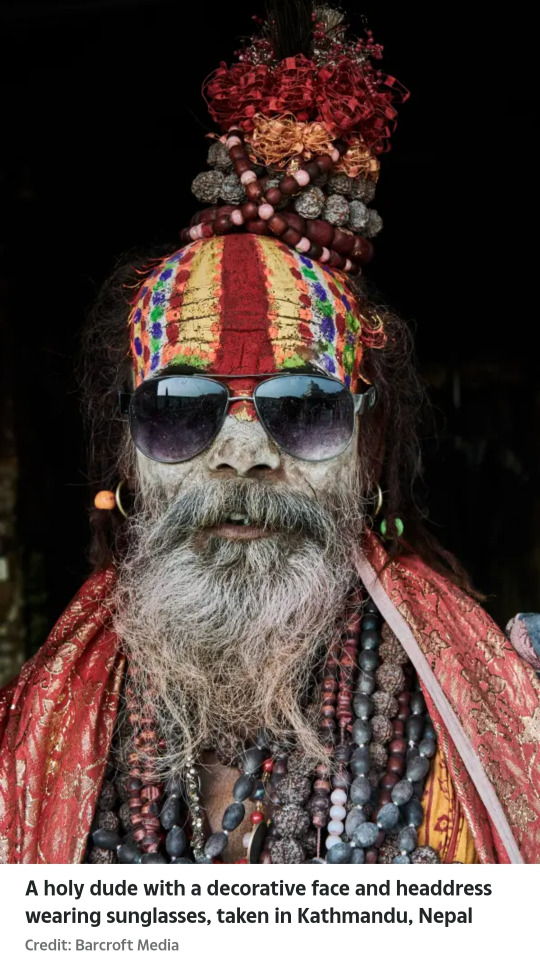

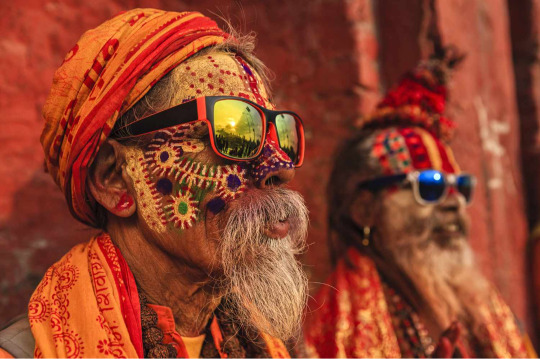
Photo by: hadynyah/Getty Images
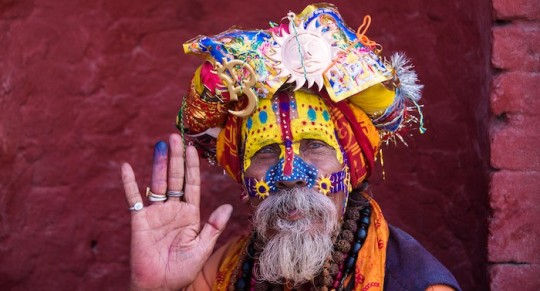
Copyright ©2023 Lost Earth Adventures
4 notes
·
View notes
Text
If this is your PATH, MAY YOU walk it with honor and INTEGRITY
#kitchen witch#green witch#astrology#witchy things#pagan#indigenous witch#healer#witchcraft#traditionalwitch#indigenous#poc#potions#poppet#make them suffer#candle magic#witch doctor#medicine woman#medicine man#holy man#smudge#paax
7 notes
·
View notes
Text

The prior.
6 notes
·
View notes
Photo
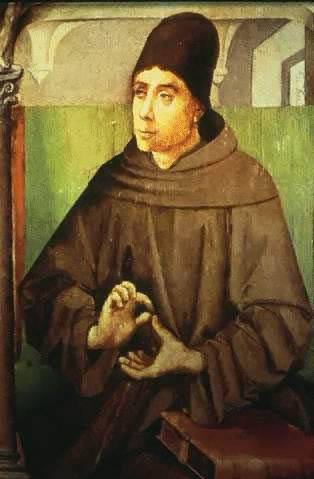


On November 8th 1308 Scholar and philosopher John Duns Scotus died.
Described as a humble man, John Duns Scotus has been one of the most influential Franciscans through the centuries. Born at Duns in the Scottish Borders, John was descended from a wealthy farming family. In later years, he was identified as John Duns Scotus to indicate the land of his birth; Scotia being the Latin name for our country.
John received the habit of the Friars Minor at Dumfries, where his uncle Elias Duns was superior. After he took vows he studied at Oxford and Paris and was fully ordained in 1291. More studies in Paris followed until 1297, when he returned to lecture at Oxford and Cambridge. Four years later, he returned to Paris to teach and complete the requirements for the doctorate.
In an age when many people adopted whole systems of thought without qualification, John pointed out the richness of the Augustinian-Franciscan tradition, appreciated the wisdom of Aquinas, Aristotle, and the Muslim philosophers—and still managed to be an independent thinker. That quality was proven in 1303, when King Philip the Fair tried to enlist the University of Paris on his side in a dispute with Pope Boniface VIII. John Duns Scotus dissented, and was given three days to leave France.
During his era, some philosophers held that people are basically determined by forces outside themselves. Free will is an illusion, they argued. An ever-practical man, Scotus said that if he started beating someone who denied free will, the person would immediately tell him to stop. But if Scotus didn’t really have a free will, how could he stop?
After a short stay in Oxford, Scotus returned to Paris, where he received the doctorate in 1305. He continued teaching there and in 1307 so ably defended the Immaculate Conception of Mary that the university officially adopted his position. That same year the minister general assigned him to the Franciscan school in Cologne where he died on this day in 1308. He is buried in the Franciscan church near the famous Cologne cathedral.
His work was still talked about centuries later In 1854, drawing on the work of John Duns Scotus, Pope Pius IX solemnly defined the Immaculate Conception of Mary. John Duns Scotus, the “Subtle Doctor,” was beatified in 1993, this is a recognition accorded by the Catholic Church of a deceased person's entrance into Heaven.
You can find a lot more on the man here https://www.ewtn.com/catholicism/library/life-of-blessed-john-duns-scotus-5809
9 notes
·
View notes
Text
Meeting Author William S. Lyon

While visiting my family in Kansas for the holidays in 1991, a friend of mine introduced me to William S. Lyon, the co-author of Black Elk: The Sacred Ways of a Lakota. We met Lyon at his home in Lawrence, Kansas. Lyon received his Ph.D. in anthropology in 1970 and has spent his career in the study of North American Indian shamanism, mainly among the Lakota. He first met Wallace Black Elk, a renowned Lakota medicine man, in 1978 when they jointly conducted a summer session course at Southern Oregon University in Ashland, Oregon. In 1986, Lyon left academia to spend full time traveling in the U.S. and Europe with Wallace Black Elk and Archie Fire Lame Deer. Over the next four years, Lyon taped the many talks given by Black Elk that resulted in the 1991 publication of Black Elk: The Sacred Ways of a Lakota. This highly-acclaimed book is entirely in the words of Black Elk.
Lyon had some great stories to share about his travels with Wallace. On one occasion, Lyon accompanied Wallace to the Pine Ridge Reservation in South Dakota. They walked out into an isolated area far from habitation to attend a sweat lodge ceremony. Hanging in a tree near the sweat lodge was Chief Crazy Horse's sacred pipe or Chanunpa. Lyon asked Wallace if he was concerned about someone stealing the pipe. Wallace answered, "No one will ever take that pipe. One time we came out here to sweat and the pipe was gone. We went into the lodge and asked the spirits to return the pipe, and sure enough when we came out of the sweat, that pipe was hanging in the tree."
Wallace told Lyon that when Mount St. Helens erupted in 1980, a lava tube opened beneath the mountain and a column of lava is now flowing from Mount St. Helens all around the Pacific Rim or Ring of Fire. The Ring of Fire is an area where a large number of earthquakes and volcanic eruptions occur in the basin of the Pacific Ocean. Wallace said that this is a sign that the Earth Changes have begun. The phrase "Earth Changes" refers to the Indigenous belief that the world would soon enter a series of cataclysmic events causing major alterations in human life on the planet. This includes natural events, such as major earthquakes, the melting of the polar ice caps, a pole shift of the planetary axis, major weather events, solar flares as well as huge changes of the global social, economic and political systems.
Lyon also recounted the story of Wallace's silver eagle pendant being stolen from the altar at a sweat lodge ceremony in Ashland, Oregon. Just as he did at Pine Ridge, Wallace went into the lodge and asked the spirits to return the pendant. When he came out of the lodge, the pendant was back on the altar. Lyon was convinced that Wallace was one of the most powerful shamans in the United States. Wallace passed away on January 25, 2004 at his home in Denver, Colorado.
4 notes
·
View notes